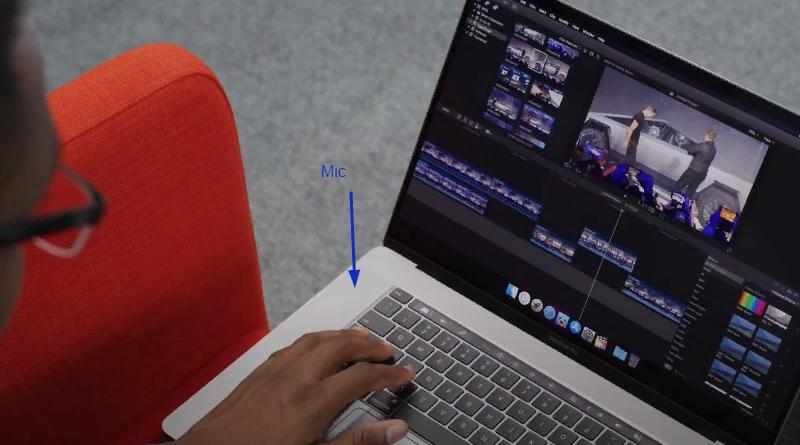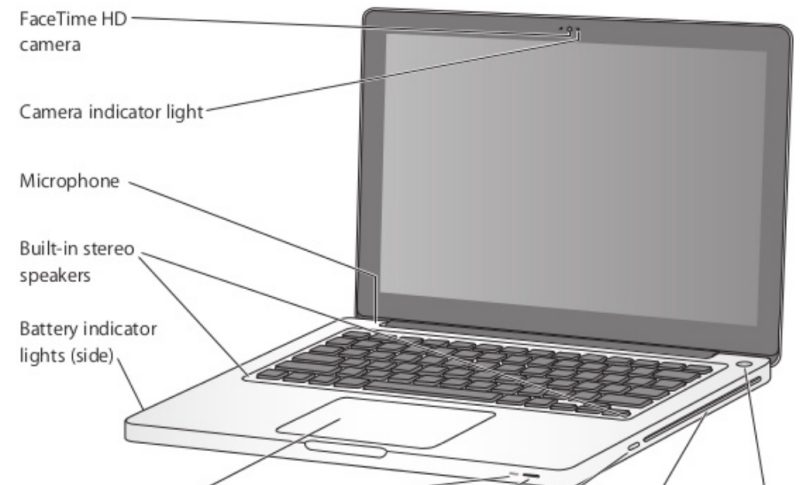
- #Where is microphone for macbook pro how to
- #Where is microphone for macbook pro password
- #Where is microphone for macbook pro Bluetooth
By default, you can trigger it by double-pressing the Function (Fn) key. If you haven’t used it before, you might want to take this opportunity to try out your Mac’s Dictation feature. If everything is configured correctly, you should see the levels moving. Make sure the microphone you want to use is selected in the drop-down menu. Click the “On” radio button and wait for any downloads to complete. Head to System Preferences > Keyboard, and then click the “Dictation” tab. It’s unclear how this helps, but if you’ve gotten this far and your mic still isn’t working, it’s worth a shot.

It’s a wild card, but some reports claim that enabling the macOS Dictation feature can help clear up some microphone issues, particularly those relating to the internal one. RELATED: What Is NVRAM, and When Should I Reset It On My Mac? Try Enabling Dictation
#Where is microphone for macbook pro how to
How you reset it depends on which Mac you have, but you can learn how to do so on your particular model here. Since this memory deals specifically with volume and sound settings, it’s particularly pertinent to microphone issues.

Sometimes, problems can arise, and resetting the NVRAM/PRAM might help. These settings persist even after your Mac has been powered off. Non-volatile RAM (NVRAM) or parameter RAM (PRAM) is the type of memory your Mac uses to remember settings, such as the time and date and current volume settings. If you can’t get the app to work, it might be time to replace it with a similar one that does. Apple has made serious changes to the macOS permissions system over the last few revisions, so some outdated apps might not work. Look for an updated version to download, just in case the issues were caused by incompatibility. If everything seems fine, try deleting and reinstalling the app. Apps like Adobe Audition and Audacity allow you to specify an input device separate from the one selected in the audio “Input” settings under “System Preferences.” You can try checking the app’s preferences to see if there are separate settings for input devices. If a specific app isn’t working, it might be the source of the problem. With the right source selected and any required permissions granted, your microphone should work. You can then approve or deny permission as you see fit by checking or unchecking the boxes next to the apps.
#Where is microphone for macbook pro password
Any you have approved will have a checkmark next to them, while those you’ve denied will not.Ĭlick the Padlock icon at the bottom left to authenticate with your admin password (or Touch ID, or Apple Watch prompt). You should see a list of apps that have requested access to your microphone. Head to System Preferences > Security and Privacy > Privacy, and select “Microphone” from the sidebar. It’s often a good idea to deny apps access to your hardware until you’re confident it needs it to function properly. If you deny the request, the app won’t be able to access the computer’s mic. When apps want to access the microphone, a notification should appear asking you to approve or deny the request.

It prevents apps from accessing the microphone until you specifically allow it. Check the Microphone PermissionsĪnother common cause of microphone problems is Apple’s expanded permissions system. If you see movement in the “Input Level” indicator, that’s a good sign, but more troubleshooting might be necessary to get things working properly. You might also see entries for other apps you have installed, like “Soundflower” or “Aggregate Device,” but you don’t want to use any of those right now. If you’re using an audio interface, select it from the list. If you want to use your AirPods as your microphone, select “AirPods” from the list. If the slider is too low, your Mac won’t detect any sound. If you don’t see anything, increase the “Input Volume” slider and try speaking again. If everything goes according to plan, you should see the bars fill up next to “Input Level” as you speak. To use a device, such as “Internal Microphone,” click it. You should see a list of devices you can use as a sound source, including, (hopefully) the microphone you want to use. Head to System Preferences > Sound, and then click the “Input” tab.
#Where is microphone for macbook pro Bluetooth
RELATED: How to Troubleshoot Bluetooth Issues on a Mac Check the Sound Input SettingsĪ common cause of microphone problems is a misconfigured sound input. Once you’re confident your chosen microphone is connected and powered on, it’s time to take a look at the audio settings. If you can’t get your Bluetooth headset to work, unpair it by clicking the “X” next to it in the “Devices” list. Finally, pair your AirPods or Bluetooth headset under System Preferences > Bluetooth.


 0 kommentar(er)
0 kommentar(er)
